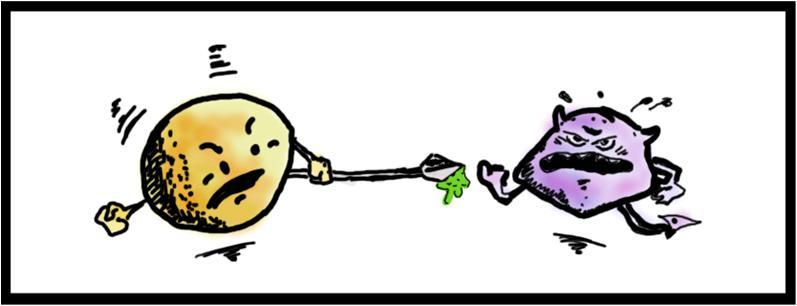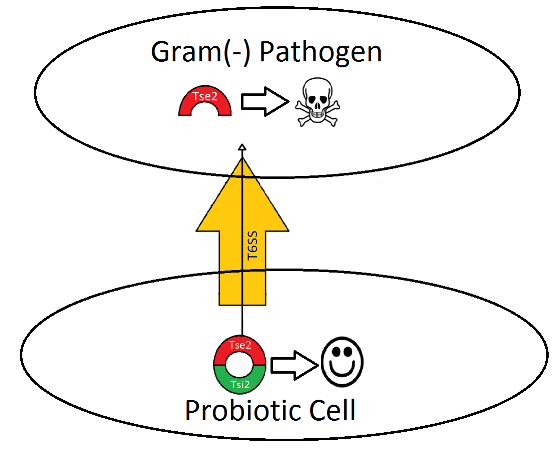Team:Washington/Gram Negative
From 2010.igem.org
Probiotics in a Gram-Negative Organism
 As time passes, it is becoming more and more apparent that the old generation of small molecule antibiotics are becoming more and more out of date. Increasingly, pathogens are evolving resistance to the currently used antibiotics, but new antibiotics are being discovered slower than pathogens are evolving antibiotic resistance. This is neccesitating the use of less effective antibiotics, as pathogens are often resistant to stronger, more effective antibiotics. Another problem with small molecule antibiotics is that they indescriminatlhy kill bacteria, wheither or not the bacteria are actually pathenogenic. This causes problems, especially when the antibiotic targets bacterial pathogens in the gut( most of which are gram(-), including Vibrio cholerae(cholera), Shigella ( dysentary), and Salmonella ( food poisoning) . Most of the bacteria in the gut is actually helpful, aiding the body in digestion, production of vitamins such as vitamin K, and competitively excluding pathogenic invaders. Both of these problems could be lessened by an antibacterial agent that only kills bacteria when a pathogen is present. This would limit the chance of the developement of resistance by limiting exposure, and would limit damage to the helpful gut flora. The goal of this project is to turn the Tse2/Type VI secretion system toxin/injection system into a probiotic anti-gram negative agent that is active only when a specific gram (-) pathogen is present.
As time passes, it is becoming more and more apparent that the old generation of small molecule antibiotics are becoming more and more out of date. Increasingly, pathogens are evolving resistance to the currently used antibiotics, but new antibiotics are being discovered slower than pathogens are evolving antibiotic resistance. This is neccesitating the use of less effective antibiotics, as pathogens are often resistant to stronger, more effective antibiotics. Another problem with small molecule antibiotics is that they indescriminatlhy kill bacteria, wheither or not the bacteria are actually pathenogenic. This causes problems, especially when the antibiotic targets bacterial pathogens in the gut( most of which are gram(-), including Vibrio cholerae(cholera), Shigella ( dysentary), and Salmonella ( food poisoning) . Most of the bacteria in the gut is actually helpful, aiding the body in digestion, production of vitamins such as vitamin K, and competitively excluding pathogenic invaders. Both of these problems could be lessened by an antibacterial agent that only kills bacteria when a pathogen is present. This would limit the chance of the developement of resistance by limiting exposure, and would limit damage to the helpful gut flora. The goal of this project is to turn the Tse2/Type VI secretion system toxin/injection system into a probiotic anti-gram negative agent that is active only when a specific gram (-) pathogen is present.
The Type VI Secretion System
The Type 6 Secretion System is an injection mechagnism found in many gram (-) bacteria, including Pseudomonas aeruginosa, but not E. coli. The T6SS acts much like a spear, physically puncturing the cell membrane and providing a channel through which proteins can be inserted into the punctured cell. The T6SS is physically incapable of puncturing gram (+) cell walls, or the cell membrane of eukaryotic cells. Therefore, our probiotic would be unable to harm either human cells, or helpful gram (+) bacteria.
Tse2/ Tsi2 toxin/antitoxin system
In Pseudomonas aeruginosa, one of the major proteins secreted by the Type VI Secretion System is the toxic protein Tse2. Normally, Tse2 forms a complex with Tsi2, a protien coexpressed with Tse2 that serves as an antitoxin. Before Tse2 is secreted into the target cell, Tsi2 unbinds with Tse2, and Tse2 is secreted into the target cell by the Type VI Secretion System. The presence of Tse2 without the presence of Tsi2 causes the target cell to die. By activating Tse2 and Tsi2 production only when a pathogen is present, we could make it so that our probiotic only kills gram(-) cells when a specific gram (-) pathogen is present.

Type VI Secretion
 "
"

